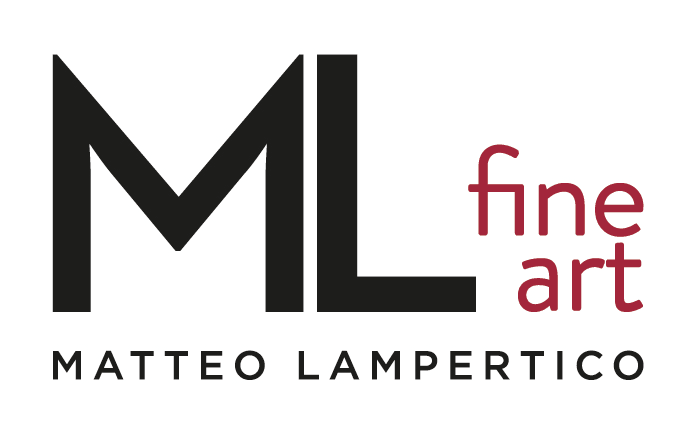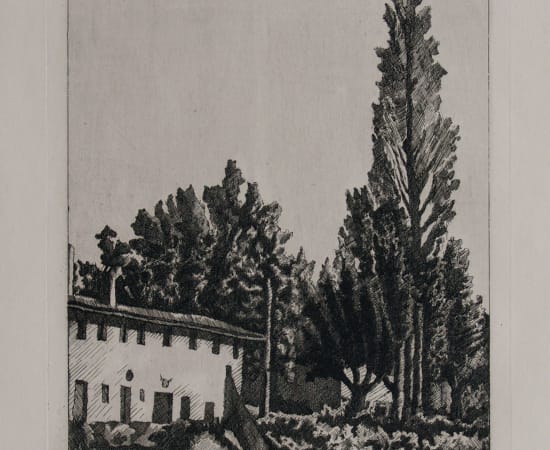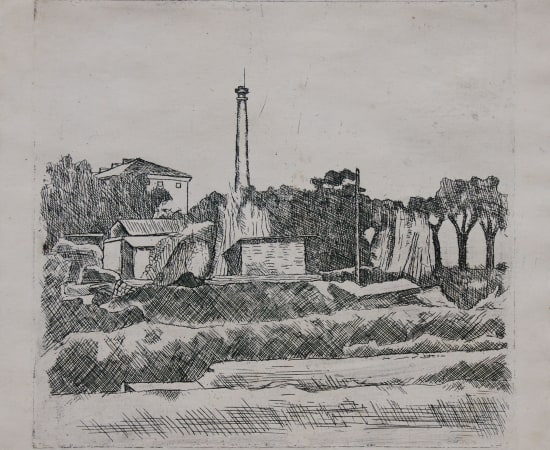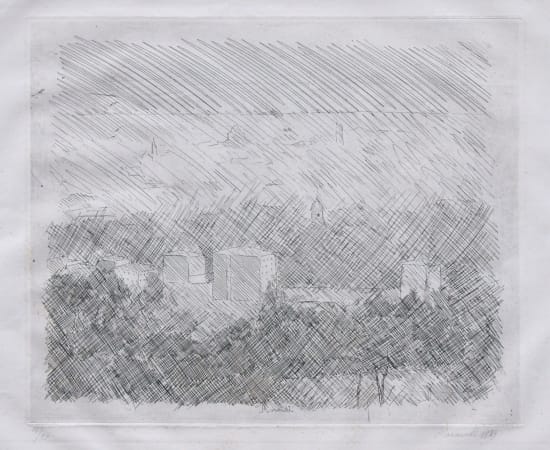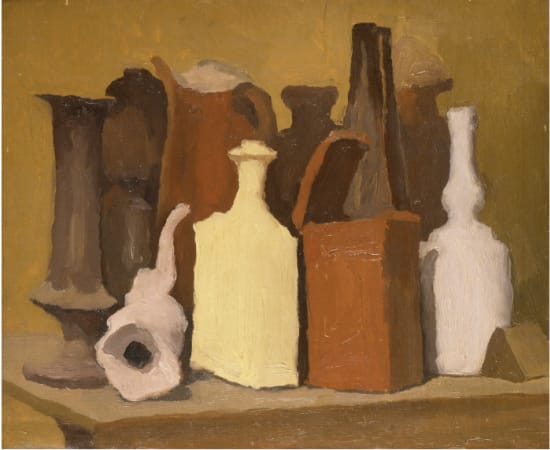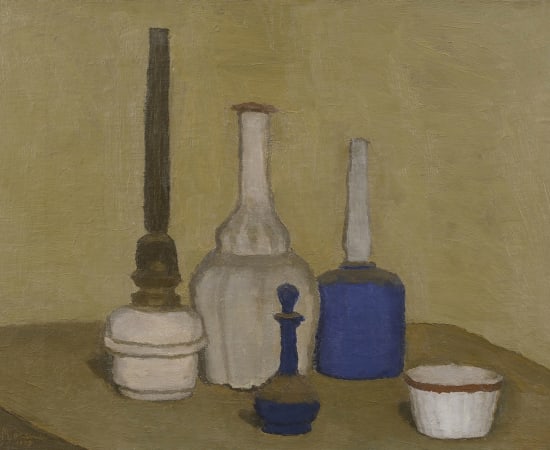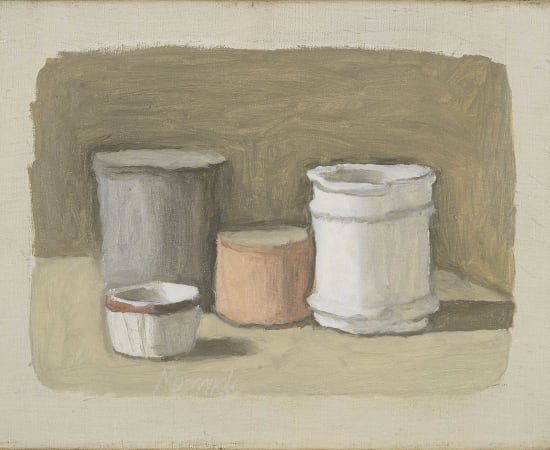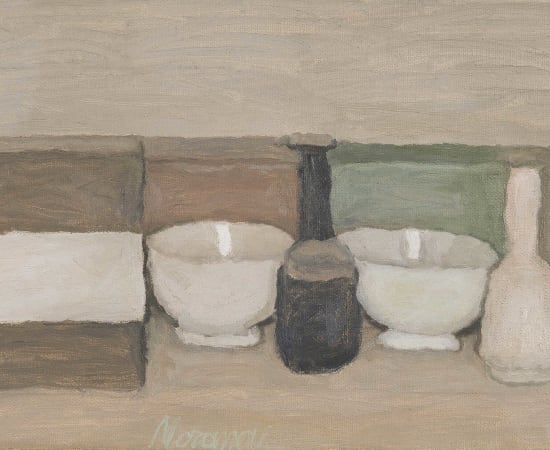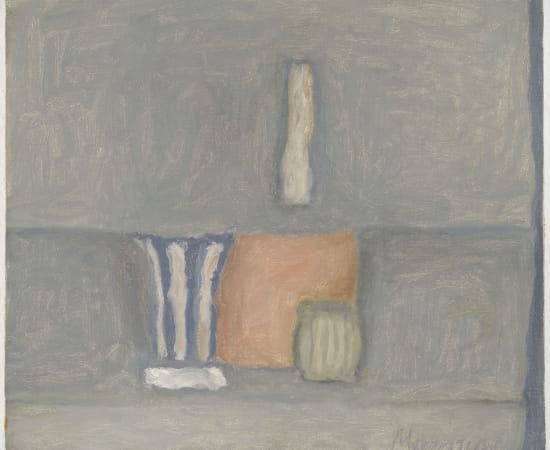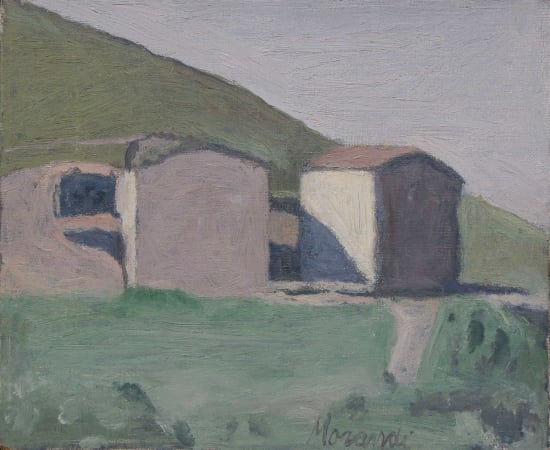Giorgio Morandi Italian, 1890-1964
Giorgio Morandi (1890-1964) was born in 1890 in Bologna, Italy, where he lived until his death in 1964. From 1907-13, he was enrolled at the Bologna Accademia di Belle Arti, where he later served as the professor of engraving and etching from 1930-56. In 1913-1914, he established connections and exhibited with Italian Futurist artists such as Umberto Boccioni, Giacomo Balla, and Fortunato Depero, and in 1918-1919, he worked briefly as part of the Scuola Metafisica with Giorgio de Chirico and Carlo Carrà. By 1920, Morandi established the small-scale depictions of still lifes and landscapes that he would pursue throughout his oeuvre, and that were associated with no other school or style but his own.
Giorgio Morandi was born on 20 July 1890 in Bologna, Italy, at Via delle Lame 57. After the death of his father, in 1910, he moved into an apartment at Via Fondazza 36 with his mother, Maria Maccaferri (died 1950), and his three sisters, Anna (1895-1989), Dina (1900-1977), and Maria Teresa (1906-1994). He would live in this building with them for the rest of his life, moving to a different apartment in 1933 and in 1935 acquiring the studio that has been preserved as part of the Morandi Museum.
Morandi died on 18 June 1964 in his flat at Via Fondazza. His last signed painting was dated February of that year.
Morandi's work has been the subject of major retrospectives and traveling solo exhibitions at institutions including the Gemeentemuseum Den Haag, The Hague, which traveled to the New Burlington Galleries, London (1954); Kunsthalle Bern, Switzerland (1964); Royal Academy of the Arts, London, which traveled to the Musée National d’art Moderne, Paris, and the Rotonda della Besana, Milan (1970); Hermitage Museum, Saint Petersburg, which traveled to the Kharkiv Art Museum, Kharkiv, Ukraine (1973); San Francisco Museum of Art, which traveled to the Solomon R. Guggenheim Museum, New York, and the Des Moines Art Center, Iowa (1981); Museum of Modern Art, Kamakura, which traveled to the Fukuyama Museum of Art, and the National Museum of Modern Art, Kyoto, all in Japan (1989); Musée Maillol, Paris, which traveled to Museu de Arte de São Paulo, Brazil (1997); Museo Thyssen-Bornemisza, Madrid, which traveled to IVAM - Institut Valencià d'Art Modern, Valencia (1999); Tate Modern, London, which traveled to the Musée d’Art Moderne de la Ville de Paris (2001-02); The Metropolitan Museum of Art, New York, which traveled to the Museo d’Arte Moderna di Bologna, Italy (2008); Museo d’Arte Città di Lugano, Switzerland (2012); and the BOZAR - Palais des Beaux-Arts, Brussels (2013).
-
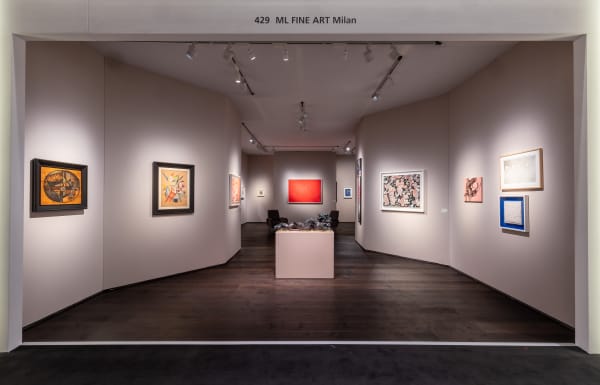
TEFAF Maastricht 2025
13 - 20 Mar 2025We are looking forward to seeing you at TEFAF Maastricht 2025! On this occasion our booth will showcase a selection of historically relevant paintings, sculptures...Read more -
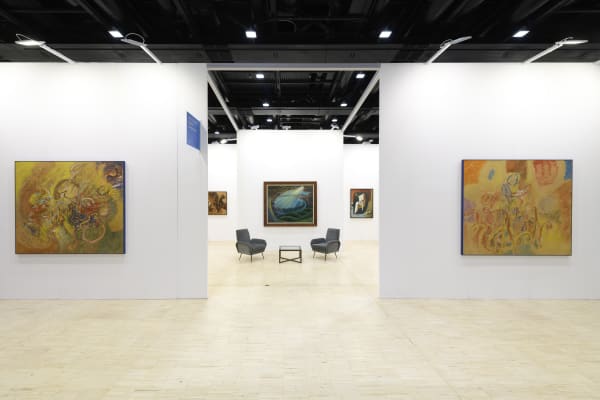
Arte in Nuvola 2024
BOOTH B30 - C29 21 - 24 Nov 2024ML Fine Art is pleased to announce its participation to Arte in Nuvola 2024, that will take place in Rome from 21 to 24 November....Read more -
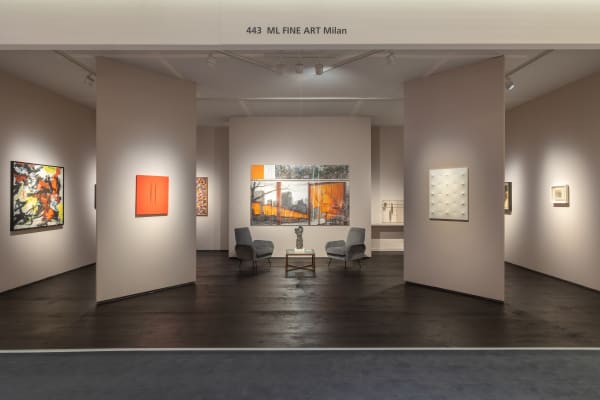
TEFAF Maastricht 2024
7 - 14 Mar 2024We are looking forward to seeing you at TEFAF Maastricht 2024! On this occasion our booth will showcase a selection of historically relevant paintings, sculptures...Read more -
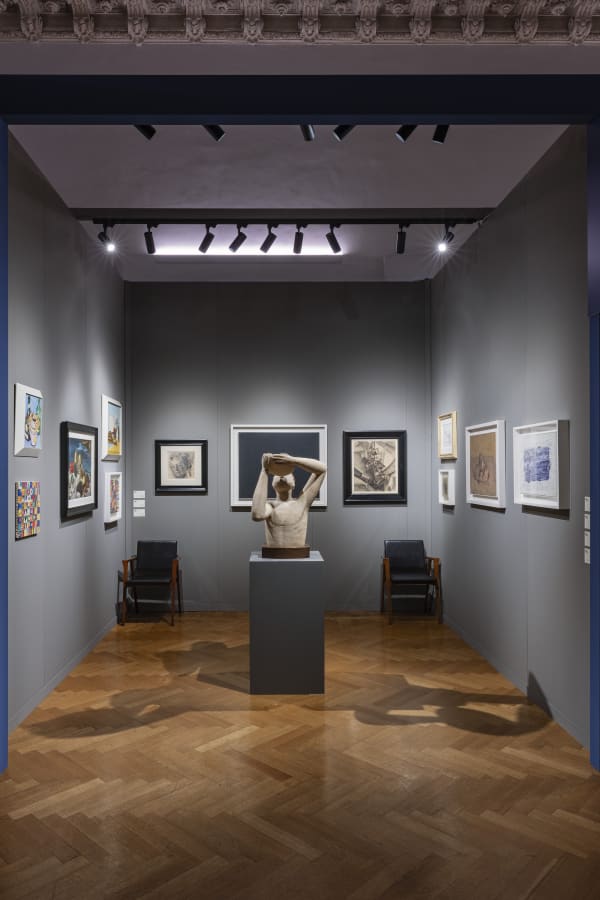
Arte e Collezionismo, Rome
ML Fine Art is pleased to invite you to visit us at Arte e Collezionismo art fair in Rome. 29 Sep - 2 Oct 2023ML Fine Art looks forward to seeing you in Rome. On this occasion our booth will showcase a selection of historically relevant paintings, sculptures and...Read more
-
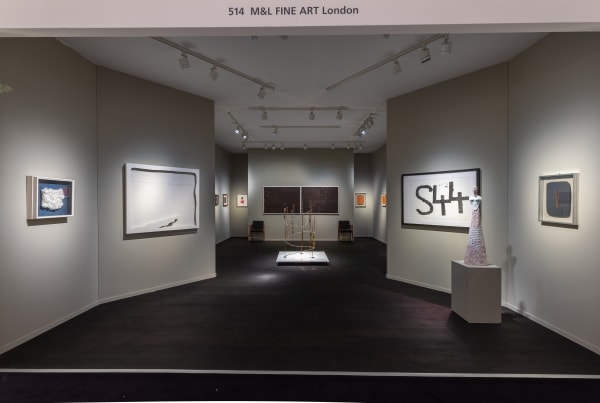
TEFAF Maastricht 2020
4 - 11 Mar 2020We are pleased to announce our participation at TEFAF Maastricht 2020. Our booth will showcase a selection of historically relevant paintings, sculptures and works on...Read more -
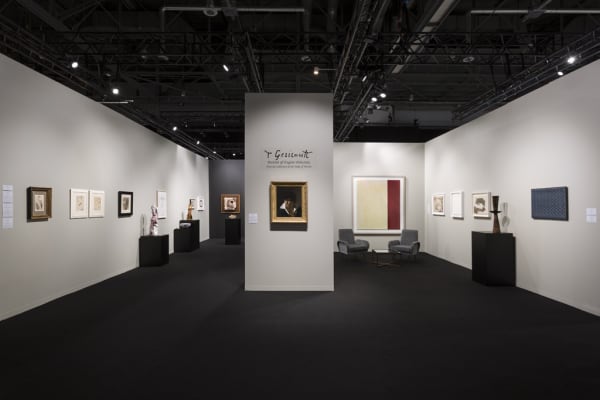
Artgenève 2019
31 Jan - 3 Feb 2019Led by important and historic works by Théodore Géricault, Paul Gauguin, Lucian Freud and Piero Manzoni, M&L Fine Art's booth presented a tightly curated booth...Read more -
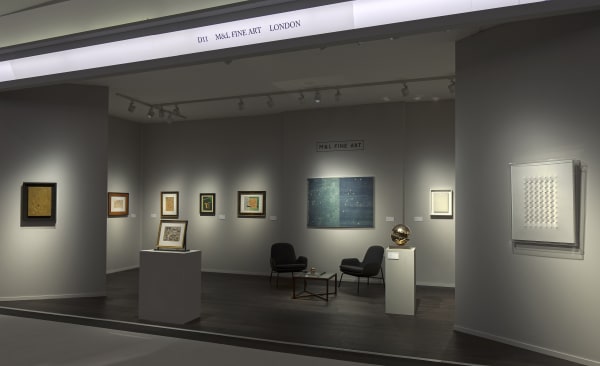
Masterpiece London 2018
28 Jun - 4 Jul 2018Read more -
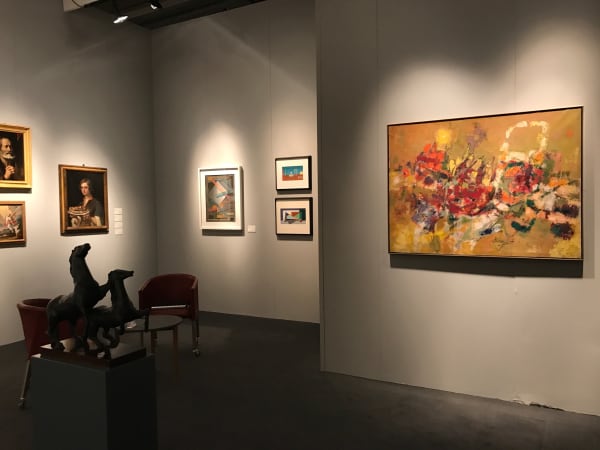
Modenantiquaria 2017
11 - 19 Feb 2017Read more
-
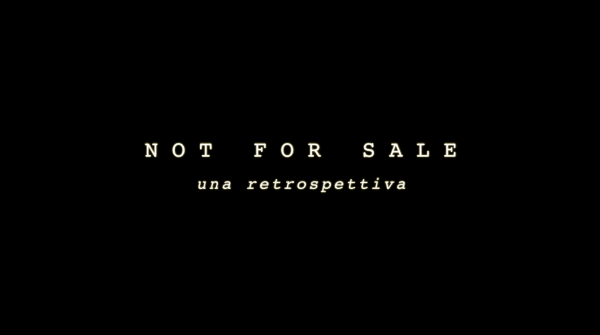
Not for Sale: a Retrospective
2007 - 2020 July 1, 2020For the opening of ML Fine Art - Matteo Lampertico new space in Milan, we are pleased to share with you a video of the...Read more -
Focus on art: Giorgio Morandi
March 24, 2020Focus on Art is a video series by ML Fine Art, presenting iconic artworks by key artists of the gallery programme. This episode will focus...Read more
